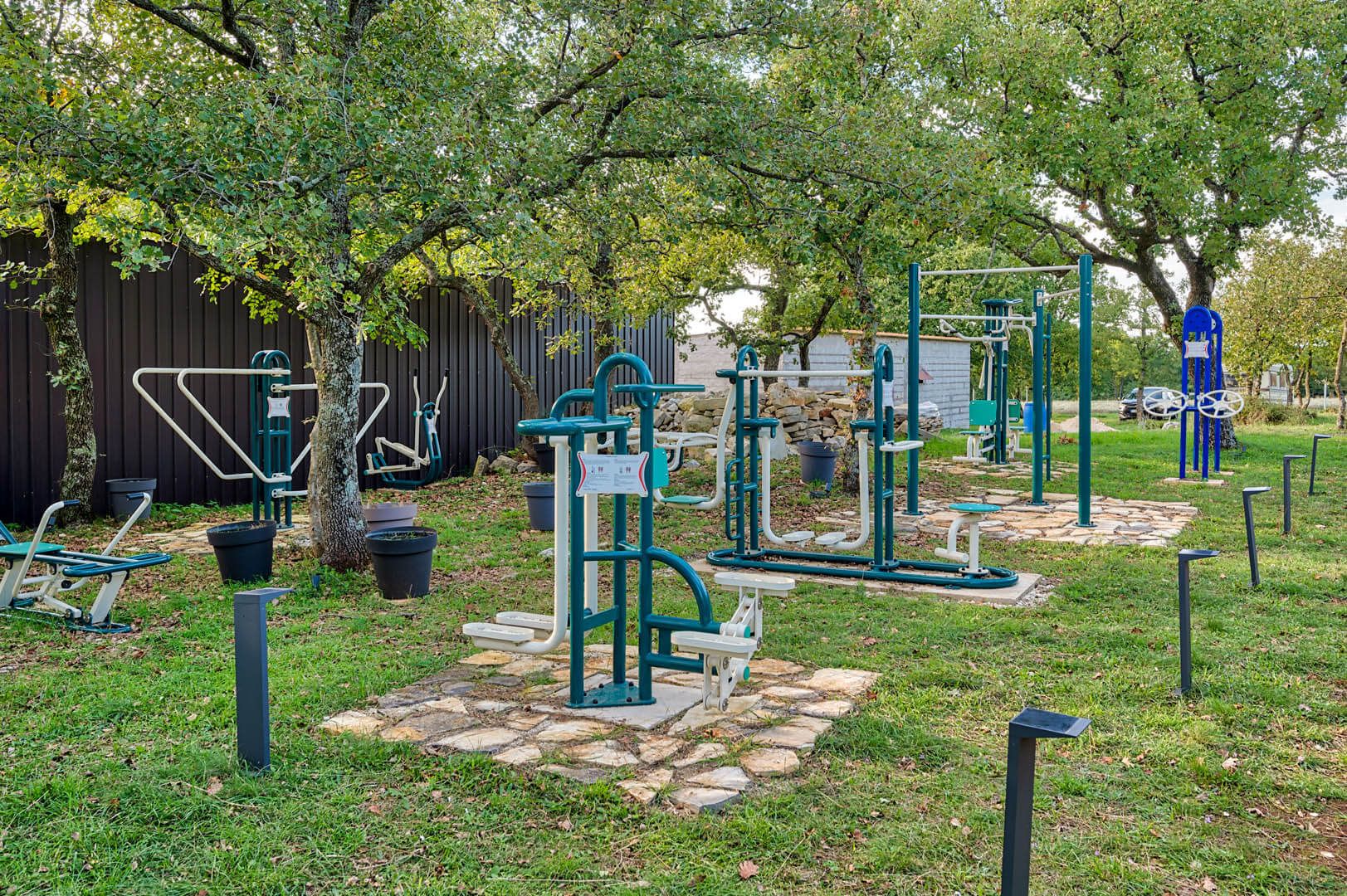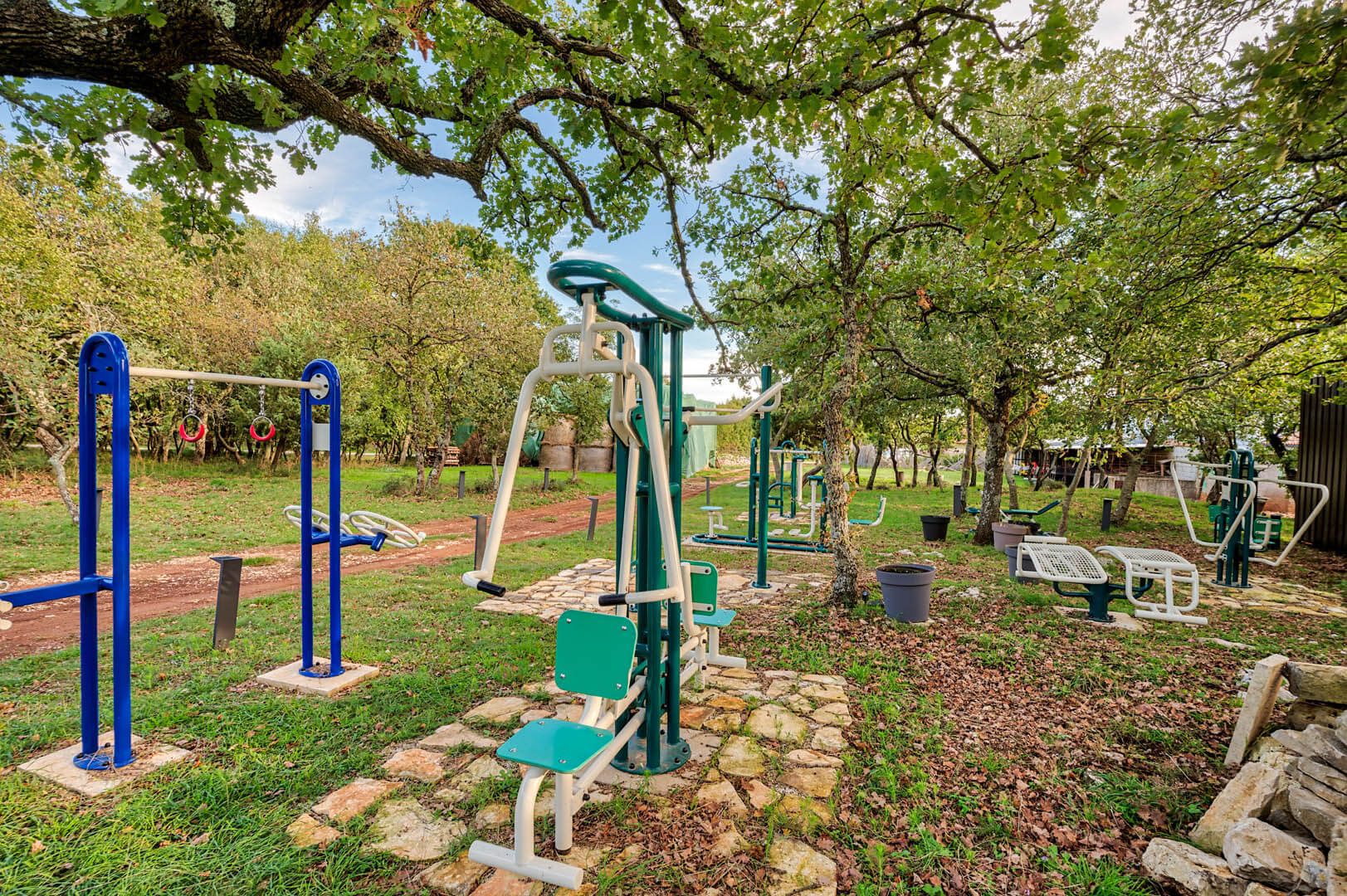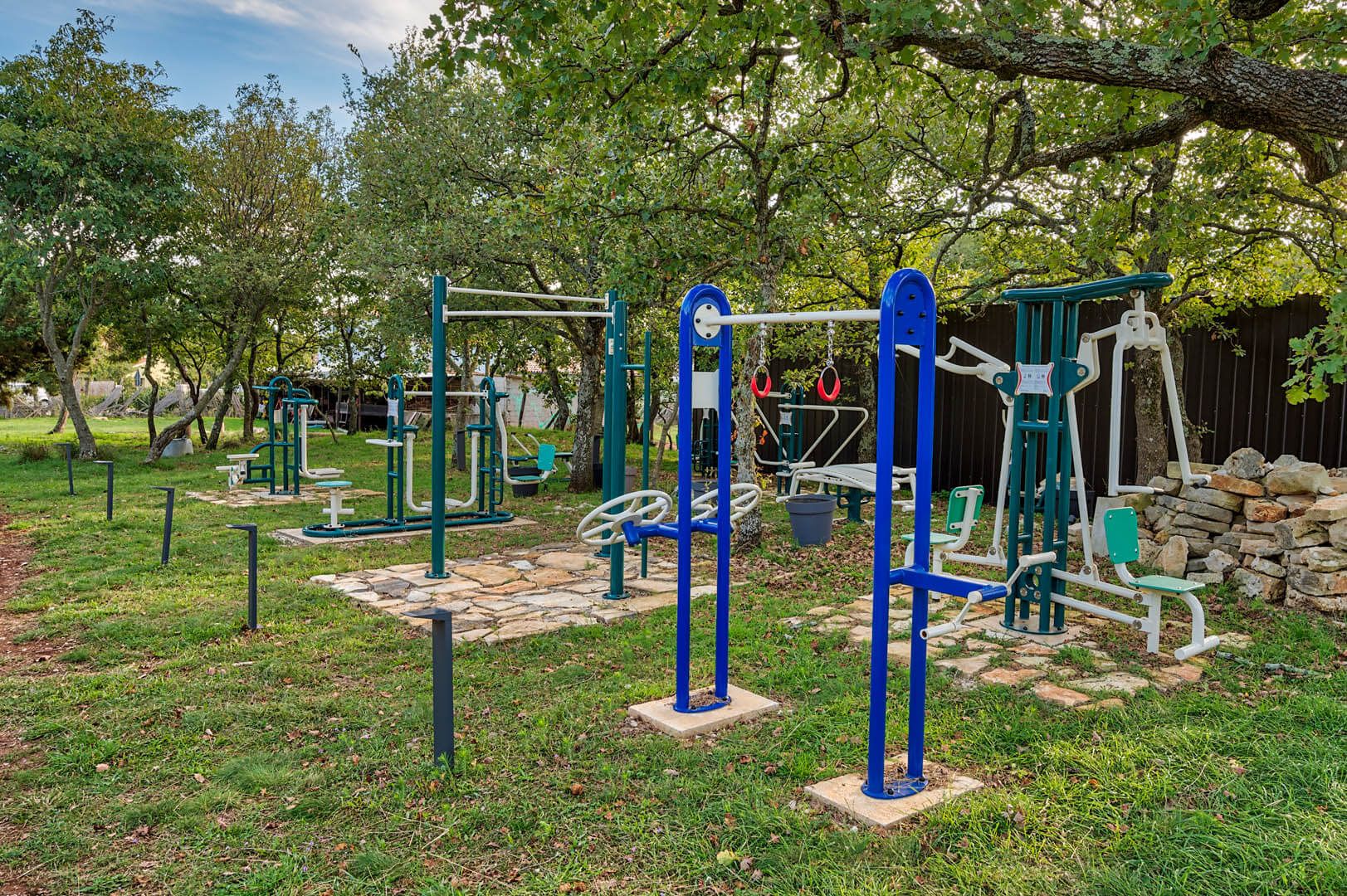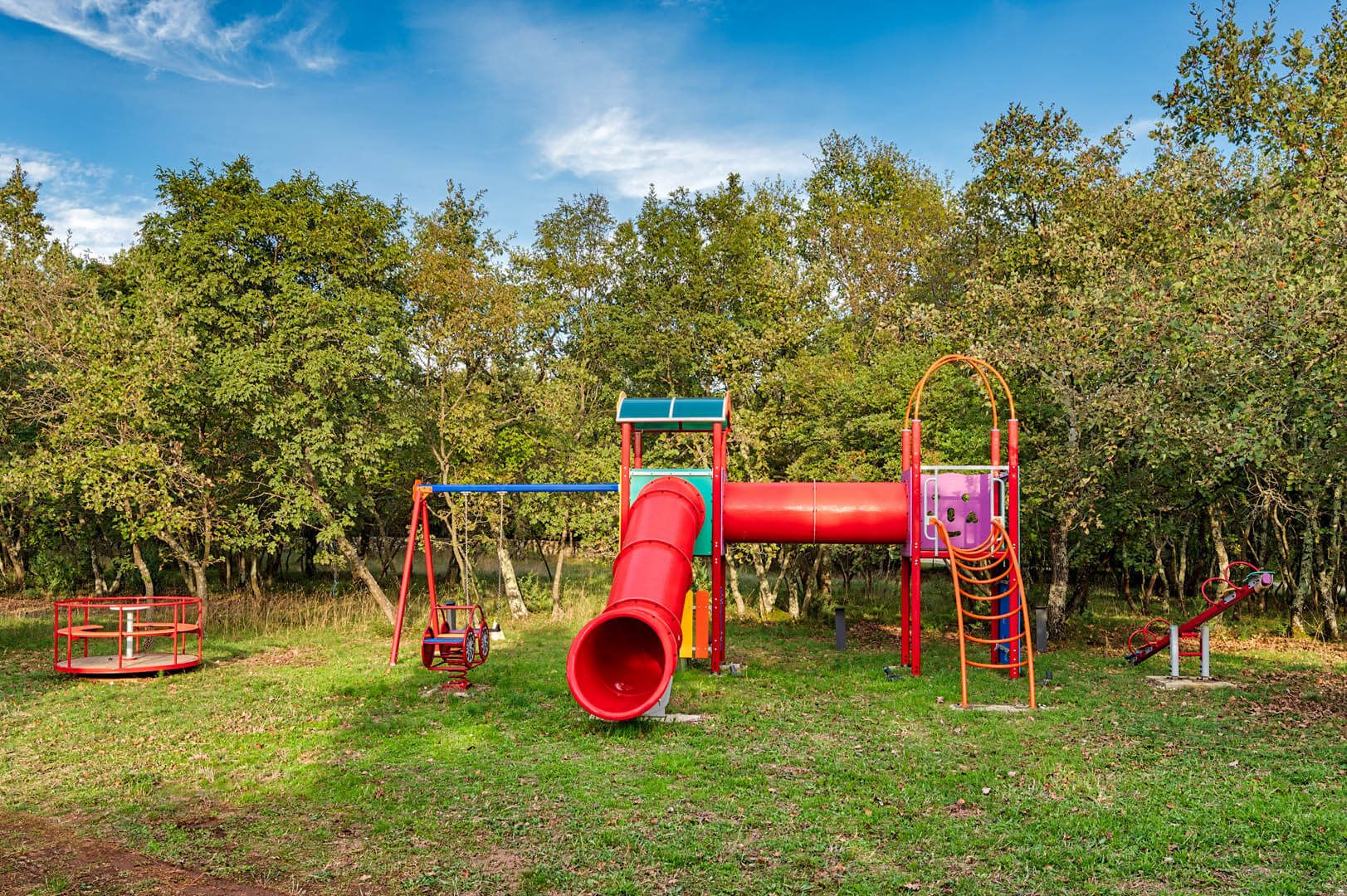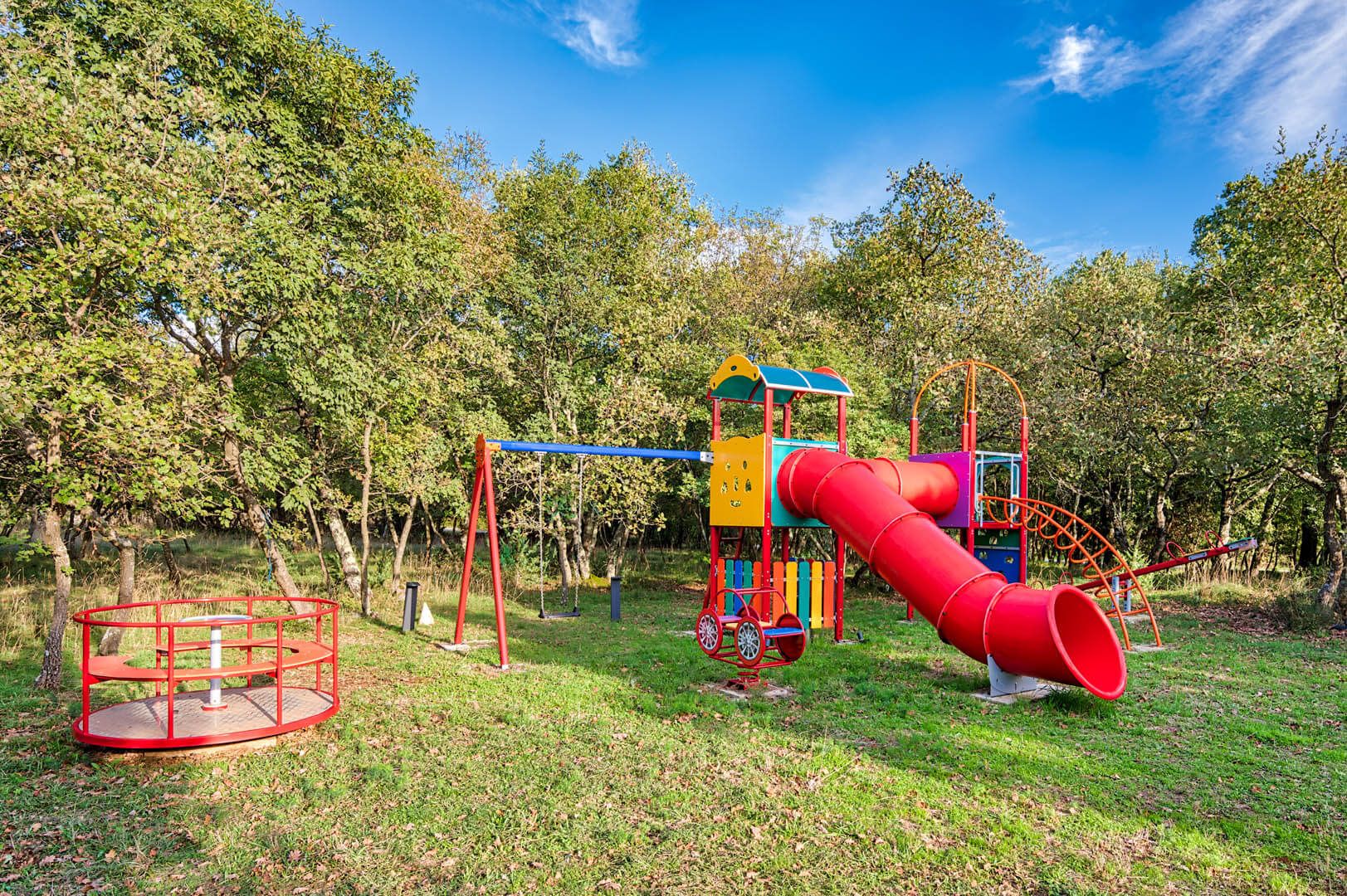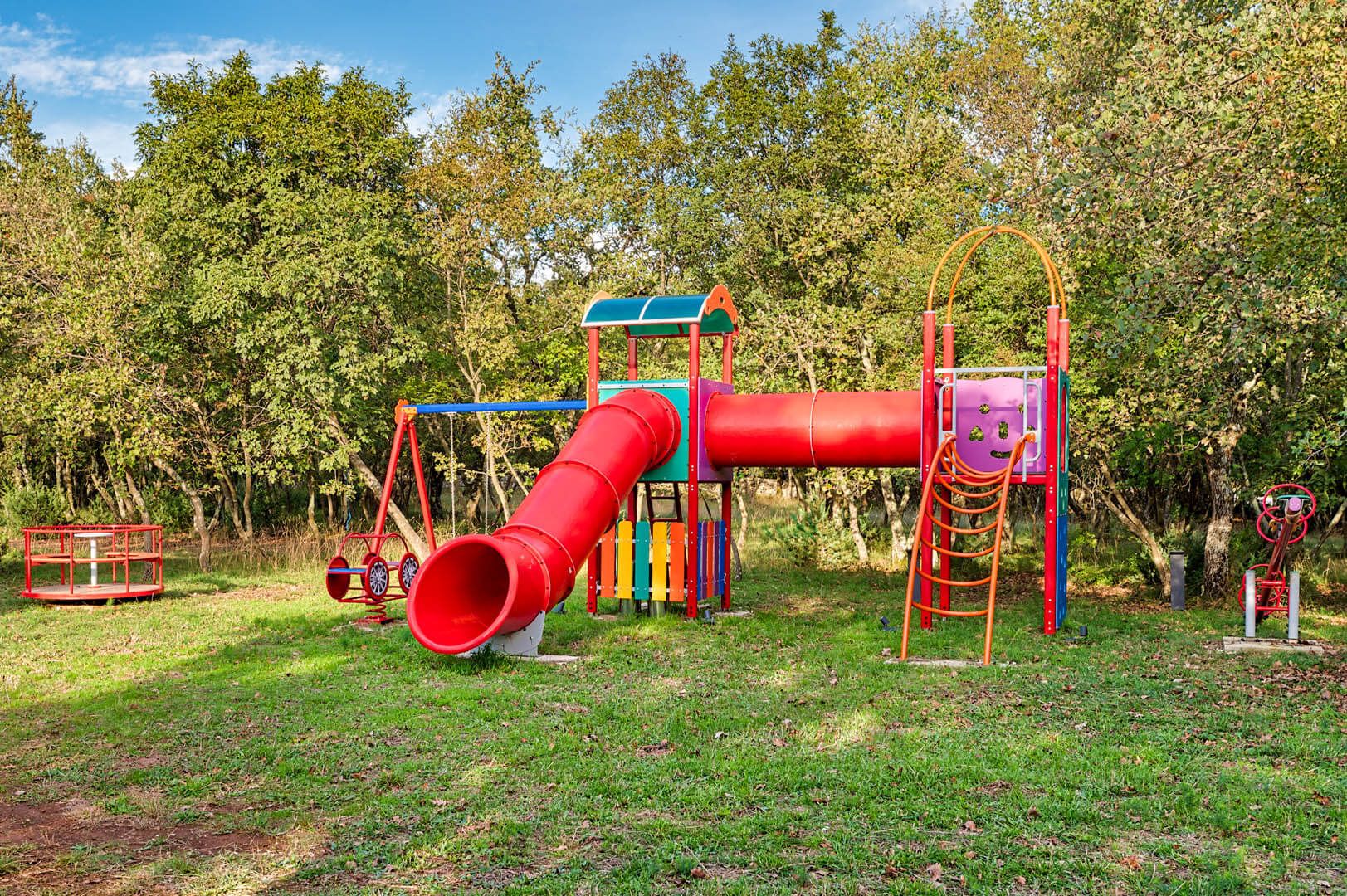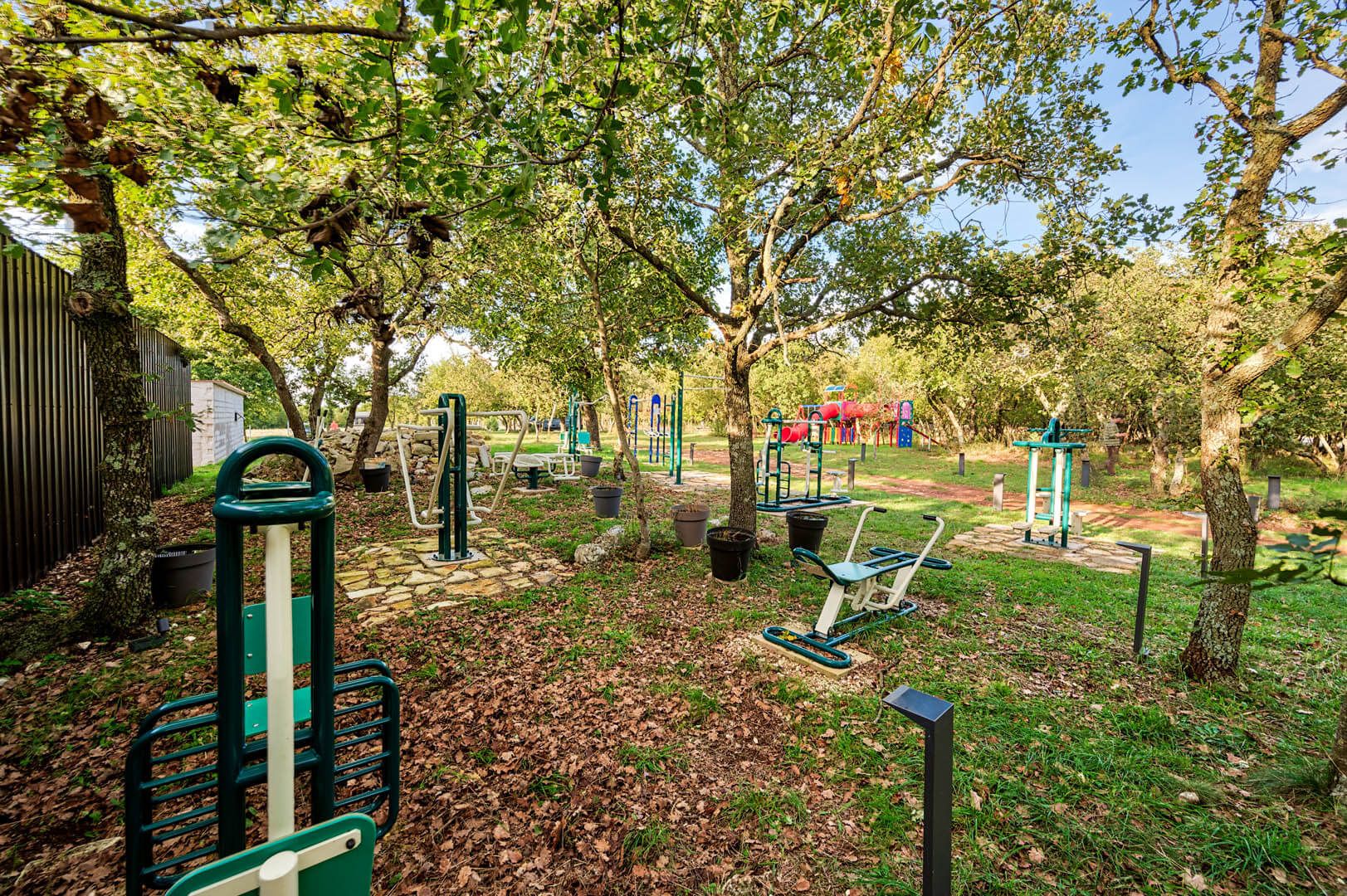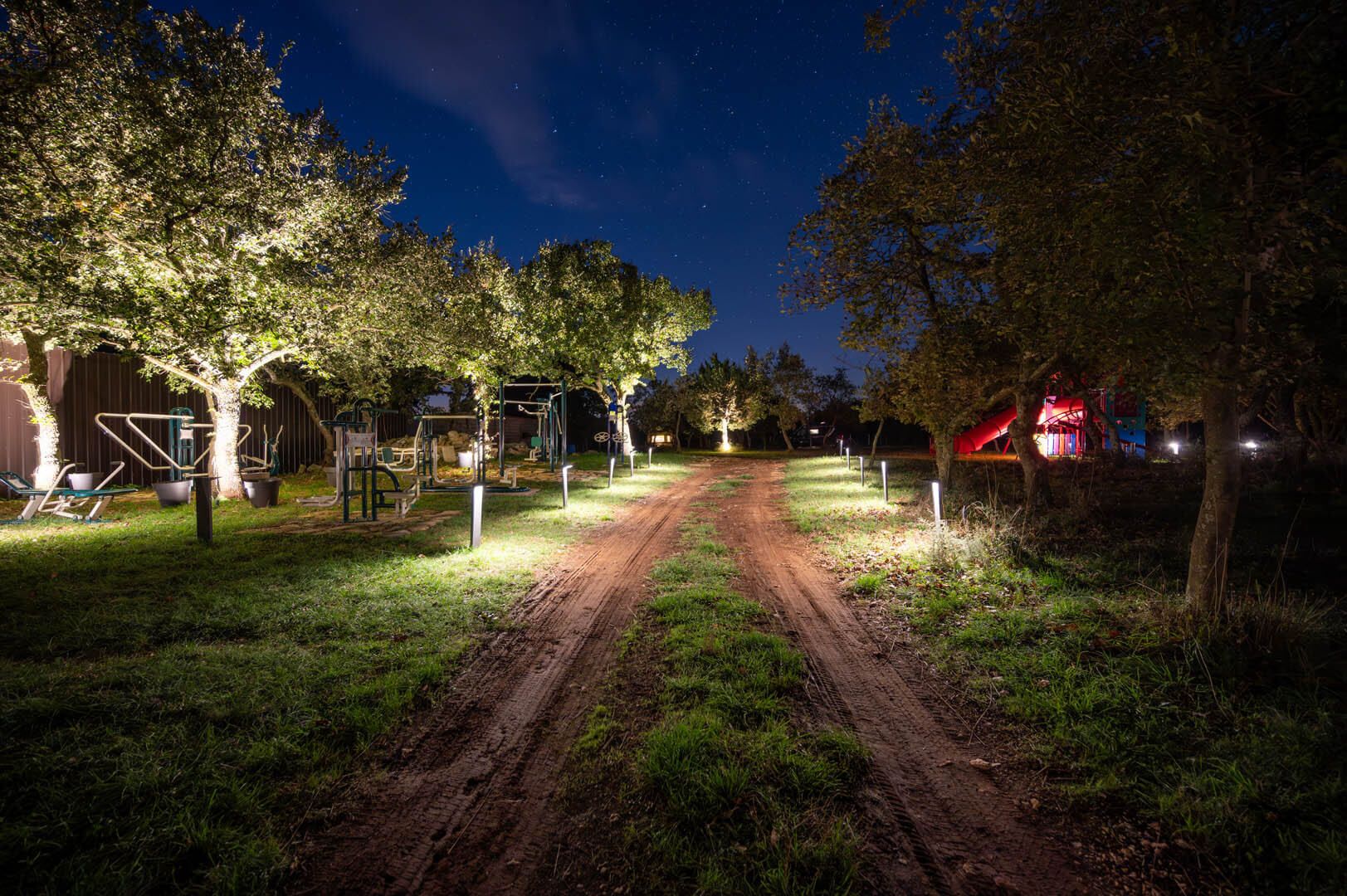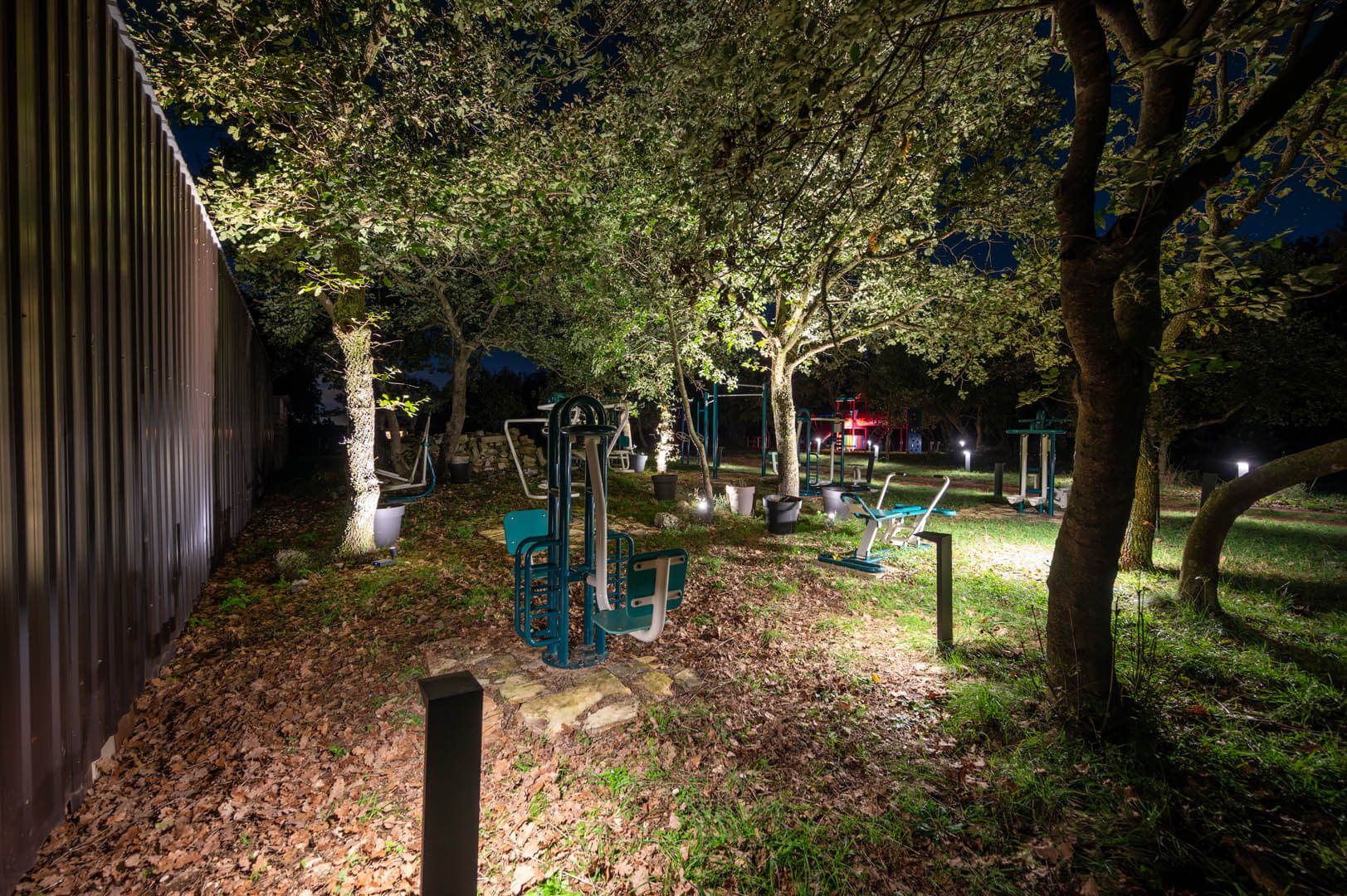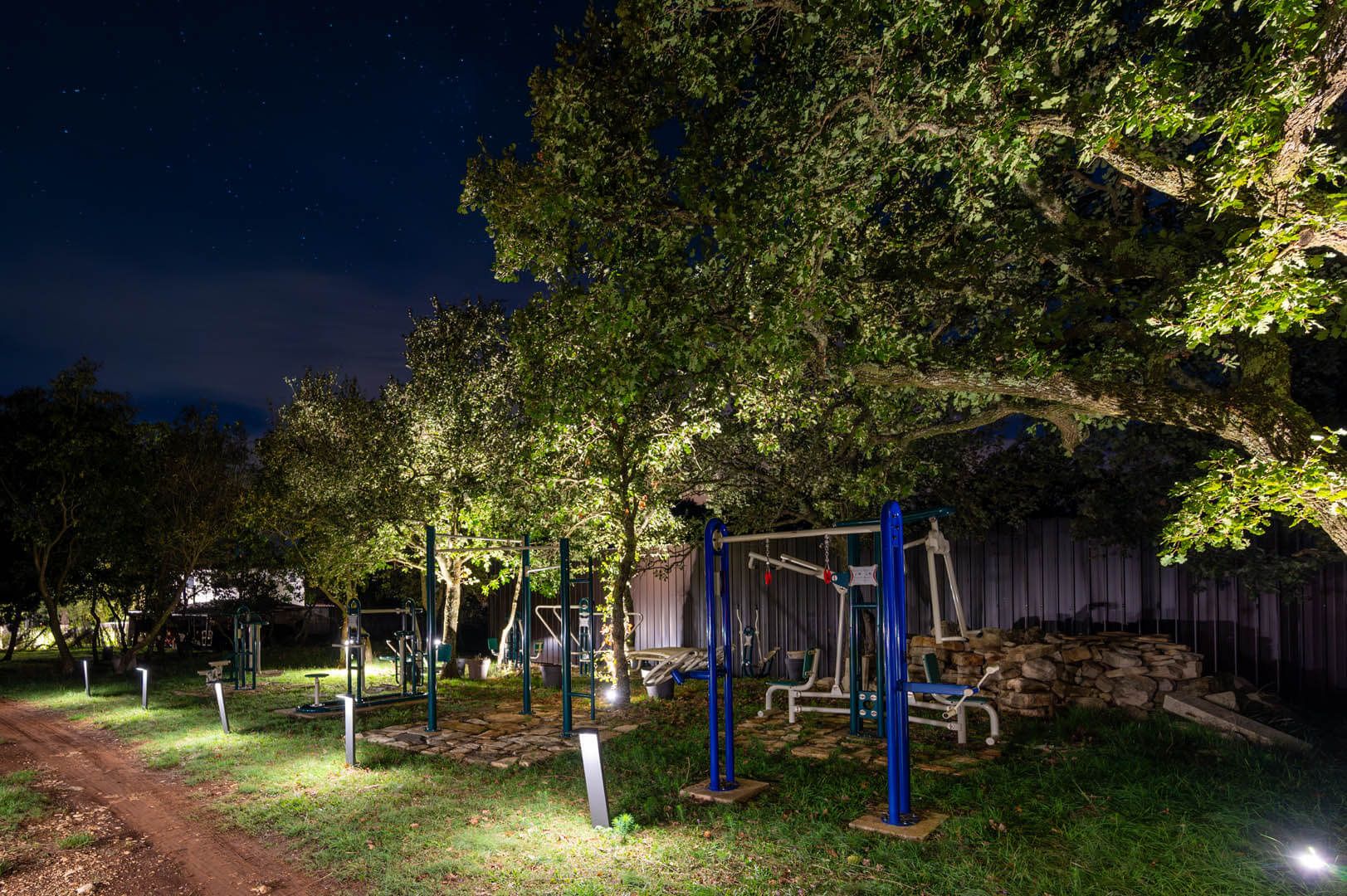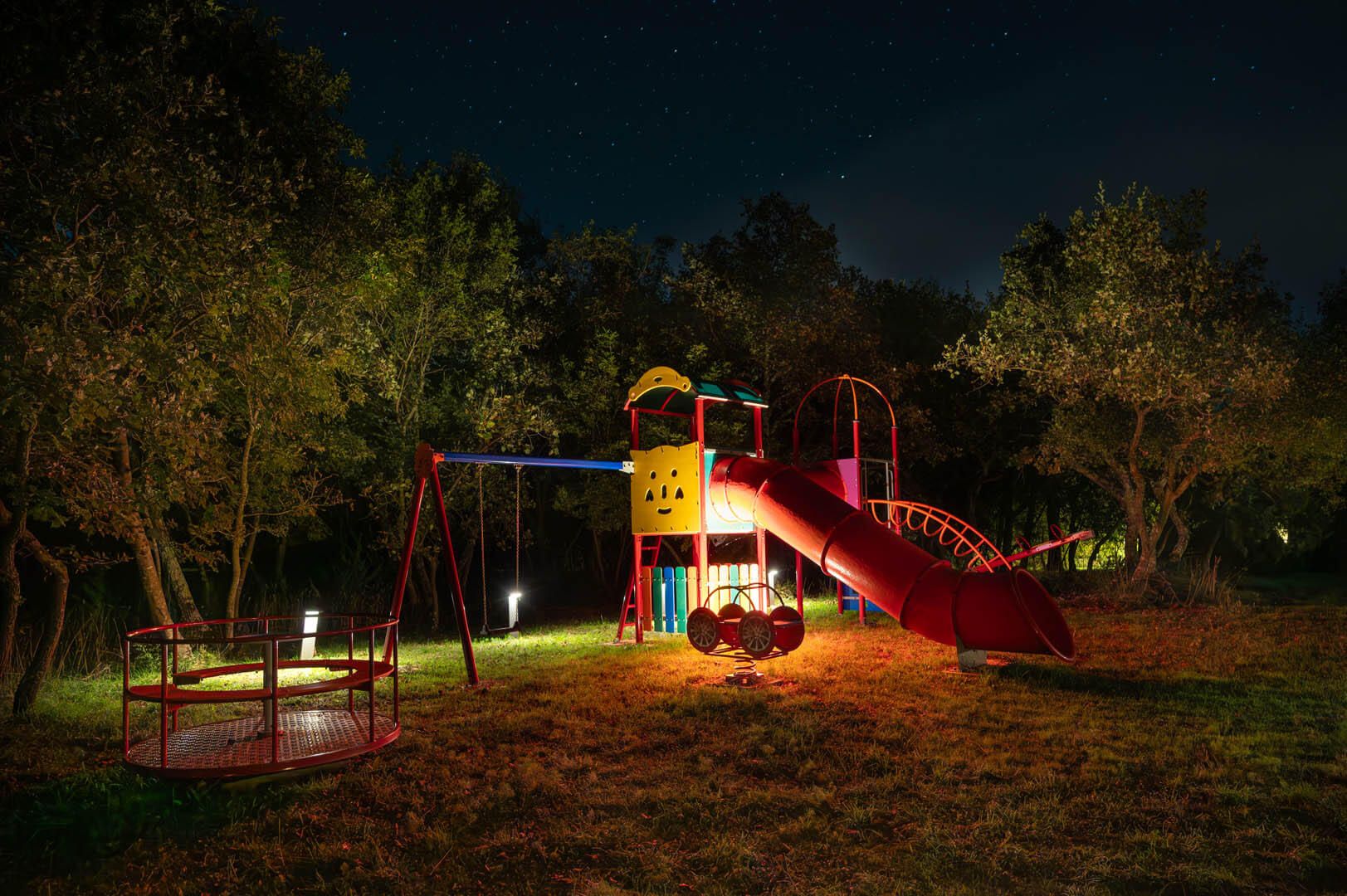Forest Park & Trail
On the agricultural estate, there is a well-maintained walking trail that begins next to the holiday house, passes by an immortelle plantation, and continues through a forest of oak, hornbeam, and ash trees. The total length of the walking trail is approximately 600 meters.
At the very beginning of the trail, there are additional facilities such as various children's playground equipment and a fitness park consisting of a combination of fitness machines designed for recreation. Each machine is equipped with a sign that includes instructions for use, warnings, and a description of the functions performed by the body during exercises. The fitness equipment is intended for outdoor recreation and exercise. They help strengthen and stretch all muscle groups, making them suitable for both active athletes and recreational users. Using the equipment increases strength and endurance, stretches muscles and joints, and improves flexibility, balance, and coordination, while also strengthening heart and lung functions.
Next to the fitness park, there is a playground area for children. Various equipment such as seesaws, merry-go-rounds, swings, climbing structures, and slides are designed for children of all ages. These play structures are created with an emphasis on active play and social interaction while ensuring maximum safety against accidents. The playground equipment is designed to help children develop physical coordination, strength, and flexibility while supporting social and emotional growth. Both the playground and fitness equipment are installed to blend harmoniously with the natural environment, particularly the surrounding forest. Part of the trail is equipped with solar lighting, contributing to ecological awareness.
Along the edges of the forest near the trail, there are dry stone walls. These walls have been carefully reconstructed using only existing stone without the addition of mortar, by manually rearranging the stones to restore their aesthetic beauty and purpose. The material used for building the dry stone walls was unprocessed stone, hand-extracted during land cultivation. The dry stone walls also served as boundaries between plots. These walls provide shelter for various animals such as lizards, snakes, and insects, enhancing biodiversity in the area. Dry stone walls are recognized as an intangible cultural heritage under UNESCO protection.
Environmental pollution endangers human health, as forests produce oxygen essential for human life. All additional facilities along the trail are made from natural materials and certified by manufacturers to blend into the natural surroundings as much as possible, emphasizing minimal environmental impact.
